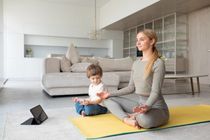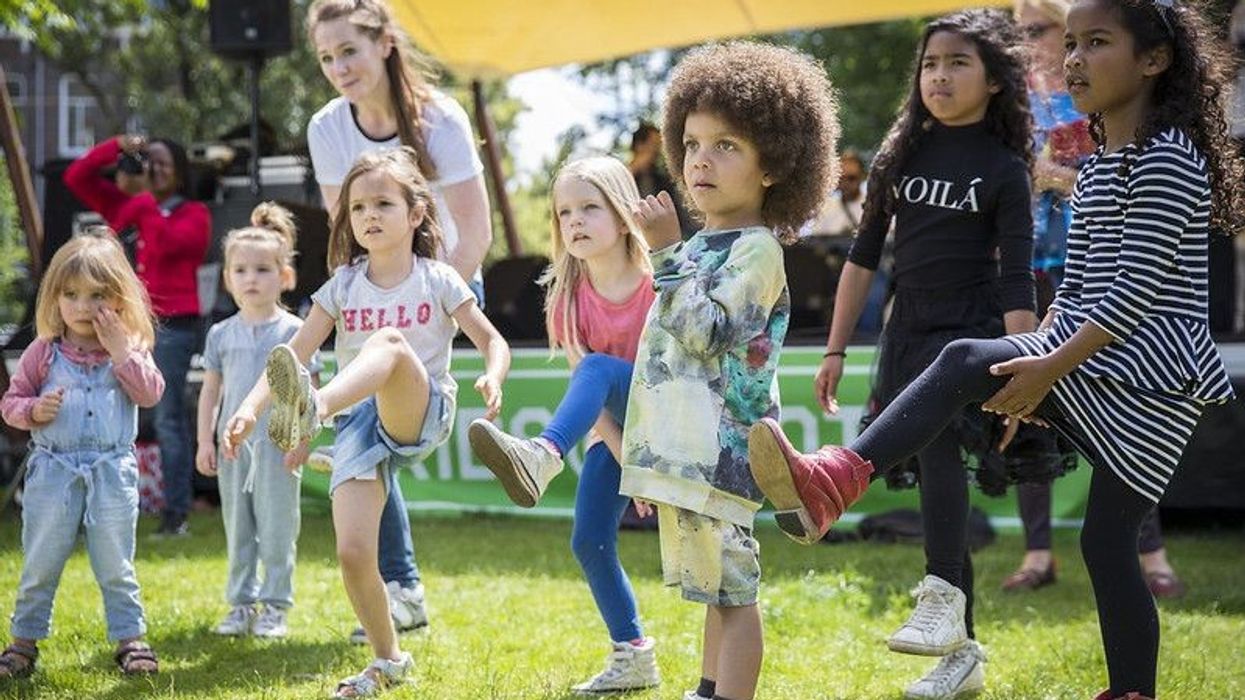Mindfulness for Primary School Aged Kids: 11 Tips And Games To Practise Together
Content
- 1. Make A Calming Glitter Jar
- 2. Blowing Bubbles
- 3. Make A Happiness Jar
- 4. What’s In The Bag?
- 5. Cloud Meditation
- 6. Yoga
- 7. Blindfold Taste Test
- 8. The Balloon Game
- 9. The Body Scan
- 10. Take A Mindful Walk
- 11. The Balancing Game
- What is mindfulness and why is it important for primary school-aged children?
- How can I introduce mindfulness to primary school-aged children?
- What are some effective mindfulness games for young children?
- How can parents and teachers measure the effectiveness of mindfulness practices for kids?
Kids can sometimes feel swamped by big life shifts that happen fast. Mindfulness can make it easier for them to understand their feelings and think happier thoughts.
As we guide our young ones through these calming practices, we're not only helping them navigate their emotions but also planting seeds for lasting resilience and positivity.
Here's a bunch of simple mindfulness games to help your family begin.
1. Make A Calming Glitter Jar
We love the concept of the calming glitter jar and it’s a great way to practice mindfulness with children.
The glitter represents all of your thoughts and feelings, when you shake your jar, imagine your head full of whirling thoughts and emotions then watch them slowly settle to the bottom while you calm down representing that you can now see things more clearly.
Your glitter jar can be used as and when you feel it would be helpful. You could use it as a tool for meditation or if your child struggles with expressing emotions and needs to take five minutes why not try using the glitter jar as an alternative to time out.
This works for grown-ups too! You’ll be surprised at how calming it can be as you watch the glitter slowly settle to the bottom of your jar.
How to make your calming glitter jar:
Jar with a screw lid or for younger children we would recommend a plastic bottle
A jug of warm water
60ml glitter glue
3 drops of gel food colouring
60g-80g glitter
Method:
1. Add warm water to your jar or bottle until it reaches about a third of the way up
2. Add the glitter glue and give it a good stir until it’s all combined
3. Add your gel food colouring
4. Pour in your glitter. You could add different colours to represent different emotions
5. Give it a good stir and pour in some more water leaving a small gap at the top so it has room to move.
6. Your calming glitter jar is ready!
2. Blowing Bubbles
This activity is a great way to practice mindfulness with children of all ages. All children love bubbles so this is a really simple but fun mindfulness exercise you can try at home together.
How to do it: Get your child to slowly inhale deeply, feeling their breath fill up their chests then slowly exhaling to blow out the bubbles. Ask them to pay attention to the bubbles as they float up in the sky, land on the floor or pop.
Repeat this several times, reminding them to take their time as they concentrate on their breaths .
For older children, you can take this exercise a step further by asking them to use the bubbles to represent any bad feelings.
So when they inhale ask them to think about anything that’s making them feel angry or upset, then as they exhale and blow out their bubbles that those bubbles are taking those bad feelings away. Stand and watch the bubbles float away.
3. Make A Happiness Jar
A jar full of happiness is like gold dust, a special place to store all of your happy thoughts that you can delve into whenever you need a little pick-me-up. Creating your own happiness Jar is a great way of teaching mindfulness to your children and a fun activity which the whole family will benefit from.
How it works: Each day, talk with your children about what they’ve enjoyed most about their day, if something funny happened, what made them smile or made them feel good inside then ask them to write it down on a piece of paper along with their name and date.
Get them to fold their note and pop it into your happiness jar.
This is a great way to help children to focus on positive thoughts and feelings.
Encourage younger children to get involved by simply asking them what they enjoyed best about their day or what made them feel happy and you can write it on a note for them.
This is something us parents will benefit from too, sometimes there will be difficult days and we may feel stressed or overwhelmed, but by focusing on the little things and being thankful for what we do over what we don’t, it will encourage us to adopt a more positive outlook.
How to make your Happiness Jar: All you need is a large jar, some paper and pens and you're ready to go. If you want, you can let the kids get crafty and decorate the jar with glitter, stickers and ribbons.
When to open your jar: Some people save up their happy notes until New Year and sit and go through them all together, others save it for special occasions, birthdays, anniversaries and so on.
It is really up to you, you can just use them simply if you're having a bad day and need something to help lift your moods. There’s no rule to it.
What we do know is that this is a wonderful way to express gratitude and a simple daily activity you can do as a family to help revisit some of your happiest moments.
4. What’s In The Bag?
This is a fun mindfulness game that children of all ages can join in with. Simply fill a bag with a variety of different objects and the idea is that your children will have to explore their senses to try and guess what the object is without them seeing it.
How to play:
- Fill a bag with a collection of small familiar items, you could use small toys, household items, the choice is yours!
- Ask your child to put their hand inside the bag and choose an item
- Then ask your child to try and identify the item without looking, using only their sense of touch- you can use a blindfold to make this more challenging
- If you have more than one child you could do the challenge timing each child to see who completes it the fastest
5. Cloud Meditation

Looking for a simple way to teach children mindfulness? Get yourselves comfortable and gaze up to the skies, the clouds will provide you and your little ones with hours of mindfulness practice. A fun activity to do with children of all ages that will help them to relax and be present in the moment.
How to do it:
- Find a comfortable spot, sitting or laying down so you have a good view of the sky.
- Begin by asking them to take five big belly breaths, concentrating on each breath
- To guide the meditation ask them a few questions for them to think about: Are the clouds big or small, fluffy or flat? Are they moving fast/slow? What shapes are the clouds making?
- Then ask your children to silently start watching the clouds, let them peacefully gaze up at the sky for as long as they want to.
- To end the exercise simply talk about what they saw in the clouds, paying attention to how it made them feel.
6. Yoga
Yoga is an excellent way to explore mindfulness with children. Don’t worry, you don’t need to be an expert to join in, you can start off with some really simple yoga exercises and breathing techniques. Here’s a few to get you started:
- Make a space, if you have exercise mats lay these down and water bottles ready to keep you hydrated
- Try some simple breathing exercises. Lay down on your backs and place a cuddly toy on your child’s tummy. Ask then to slowly inhale with deep breaths so that their cuddly toy rises up, then gently exhale watching the toy go back down. Do this deep belly breathing for a few minutes before moving onto the next exercise.
- Try some buzzy bee breaths, sit upright shoulders back with eyes closed. Slowly inhale and exhale through your nose keeping you mouth closed. Do this a few times then when you exhale get your kids to make the “mmmmm” sound pretending to Buzz like a bee. Continue this for a few minutes asking your children to concentrate on their breaths then slowly open their eyes and continue to breath normally.
- A few simple poses to try: The Cat Pose, come to an all-fours position, arch you back and tuck your chin into your chest as you pretend to be a cat. Tree Pose: Stand on one leg, bend your knee, place the sole of your foot on your inner thigh, and balance.
There’s so many fantastic resources available to you online, one of our favourites for mindfulness for children is Cosmic Kids Yoga. Visit their YouTube channel and you’ll find a series of fun and interactive videos set to some of your children's favourite stories and nursery rhymes. These videos are aimed at children aged 3 and over.
7. Blindfold Taste Test
Teach mindfulness to your kids with this fun tasting game. Kids will love being blindfolded whilst trying to guess the different foods that you're feeding them. The purpose of this game is to encourage mindful eating and to get your children to explore their senses. Children of all ages will enjoy playing this game.
How it works:
- Start with some mindful breathing exercises, taking deep gentle breathes to inhale and then exhale. Do this for a few minutes
- Place a blindfold over their eyes
- Place a small amount of your chosen food into your child’s mouth, you can choose whatever you like, chocolate, fruit the choice is yours
- Ask them to just hold it in their mouth before taking a bite.
- Can they guess what it is?
- Then ask them to think about these things whilst they are eating: What does it taste like? Is it sweet or savoury? Do they need to crunch it with their teeth or does it dissolve in their mouth? Ask them to think about what muscles they are using in their mouth and how it feels when they swallow
- The winner of the game is the person that can correctly guess the most amount of foods
8. The Balloon Game
Can you keep the balloon up? A fun mindfulness game suitable for children of all ages. All you need to do is to stop the balloon from touching the floor. This game is great for helping children to focus their minds and bodies.
How to play:
- Each player needs their own balloon
- All they need to do is keep the balloon in the air using only their hands
- The winner is the person who keeps their balloon afloat for the longest
9. The Body Scan
Looking for a mindfulness exercise to help your child to relax? Try a body scan meditation to help them wind down after a hectic day. This is a great mindfulness activity to do as part of your child's bedtime routine but can be practised at any time.
How to do it:
- Ask your child to lay down on the floor or sit comfortably on a chair with their eyes closed
- Start with some mindful breathing exercise
- Ask them to focus on each little part of the body, starting from head to toe, as they inhale and exhale.
- Finish the exercise with some more mindful breathing
This is a great YouTube tutorial which will guide you through a Body Scan mediation exercise.
10. Take A Mindful Walk
Going for a mindful walk is a great way to help your children practice mindfulness. Get your children to pay special attention to using their senses- sight, hearing, smell and touch.
How to do it:
- Ask your child to pay close attention to how their feet feel as they walk along the ground
- Get them to take time to look around and notice things which they haven’t seen before
- Ask them to spot out different shapes and colours
- Can they notice any different smells?
- Get them to listen out for different sounds
11. The Balancing Game
Can you make it to the end without falling off? This balancing game will help to teach your kids about body awareness, paying attention and keeping calm. They will need to concentrate and stay focused to make it to the end without falling off. A fun mindfulness game for the whole family.
How to play:
- Using masking tape, make a long line on the floor
- Start off with some mindful breathing
- Get your kids to stand at the beginning, they can use their imagination here pretending to be on tightrope high above the ground
- With their arms stretched out for balance, ask them to slowly walk along the rope paying close attention to their feet as they try to make their way to the end without falling off
- If they fall off the rope then they have to start back at the beginning
Whilst learning at home and at school, it's important to check in with your kids and allow for some breathing space too. Download your Children's Mindfulness Kit below and keep it somewhere handy to remind the whole family to look after their mental health.
Main image credit: Pautova Iuliia / Shutterstock.com
What is mindfulness and why is it important for primary school-aged children?
Mindfulness involves being fully aware of the present moment, including thoughts, feelings, and surroundings, without judgment. It is important for children as it helps enhance focus, reduce stress and anxiety, and improve emotional regulation and resilience.
How can I introduce mindfulness to primary school-aged children?
Start by introducing simple, engaging activities that capture their attention. Use age-appropriate language to explain mindfulness as paying full attention to what we are doing, feeling, and thinking. Begin with short, guided exercises like mindful breathing or listening games.
What are some effective mindfulness games for young children?
Mindful games like "The Listening Game," where kids close their eyes and identify sounds around them, or "Mindful Tasting," which involves slowly and attentively eating a small piece of food, can be fun and educational. "The Mind Jar," a glitter jar used to settle and explain emotions, is another great tool.
How can parents and teachers measure the effectiveness of mindfulness practices for kids?
Assess the effectiveness by observing changes in the children’s behavior over time, such as improvements in their ability to manage emotions, increased attention span, and better interpersonal relationships. Regular feedback from children about how they feel before and after the exercises can also provide valuable insights.
We Want Your Photos!
More for You
See All

An avid explorer of the great outdoors and an enthusiast of creative hobbies, Sarah is a resident of Surrey who enjoys spending her free time discovering new places with her two young daughters. With a degree in her arsenal, she maintains her physical fitness by engaging in activities such as baking, crafting, gardening, and exercise. Her well-rounded personality, diverse interests, and adventurous nature make her an excellent addition to any team.
Disclaimer
1) Kidadl is independent and to make our service free to you the reader we are supported by advertising. We hope you love our recommendations for products and services! What we suggest is selected independently by the Kidadl team. If you purchase using the Buy Now button we may earn a small commission. This does not influence our choices. Prices are correct and items are available at the time the article was published but we cannot guarantee that on the time of reading. Please note that Kidadl is a participant in the Amazon Services LLC Associates Program, an affiliate advertising program designed to provide a means for sites to earn advertising fees by advertising and linking to Amazon. We also link to other websites, but are not responsible for their content.
2) At Kidadl, we strive to recommend the very best activities and events. We will always aim to give you accurate information at the date of publication - however, information does change, so it’s important you do your own research, double-check and make the decision that is right for your family. We recognise that not all activities and ideas are appropriate for all children and families or in all circumstances. Our recommended activities are based on age but these are a guide. We recommend that these ideas are used as inspiration, that ideas are undertaken with appropriate adult supervision, and that each adult uses their own discretion and knowledge of their children to consider the safety and suitability. Kidadl cannot accept liability for the execution of these ideas, and parental supervision is advised at all times, as safety is paramount. Anyone using the information provided by Kidadl does so at their own risk and we can not accept liability if things go wrong.
3) Because we are an educational resource, we have quotes and facts about a range of historical and modern figures. We do not endorse the actions of or rhetoric of all the people included in these collections, but we think they are important for growing minds to learn about under the guidance of parents or guardians.







